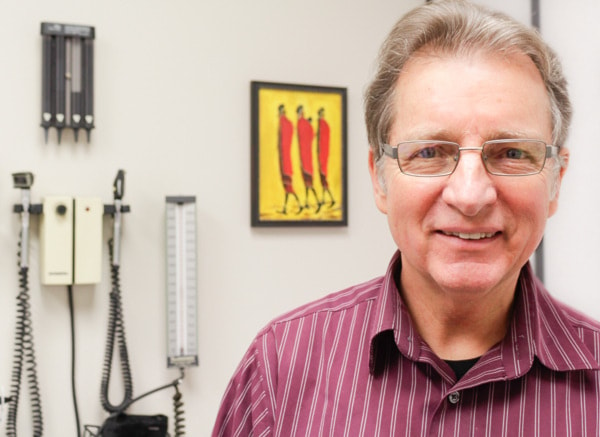Penticton doctor Glen Burgoyne recently returned from a trip to Africa, but not for the first time.
This was Burgoyne’s seventh trip and fourth to Tanzania. It was, however, his first with the Canadian Network for International Surgery.
“I usually try to do a volunteer trip about once a year, which I have been doing for a number of years,” said Burgoyne. In previous years he both worked on his own and with other groups, but working with CNIS was a little different; their focus is also to educate medical workers in the countries they visit.
“I’ve gone on other trips where I have done front-line medical work. I feel that a better approach is to teach them how to do the things they need to do, then it will become self sustaining, rather than us just going, doing the work and leaving,” said Burgoyne. “You don’t leave much behind. I have shifted my thinking on this now to where I want to be in a teaching role.”
Helping medical workers in countries like Tanzania upgrade their skills and knowledge means leaving behind something that can be carried forward, Burgoyne said.
“Before I did this, I had to take a training course of how to teach this course,” said Burgoyne. “The other purpose of this program, it’s not just for us to go over and teach, we’re actually training people there to teach.
“There is just such a huge gap between the medical resources and training we have in this country compared to what they have. It just seems that whatever I can do to lessen or bridge that gap is something I want to do.”
In this case, Burgoyne was working with a group of 50 clinical officer students, undergoing an intense training course to prepare them for work in an outlying health centre, alongside a surgeon from Mwanza — one of the larger cities in Tanzania — who helped instruct the course.
“The kind of training we were doing was mainly in practical skills, not their actual medical knowledge,” said Burgoyne, describing how they had skill stations set up to show the students how to deal with lacerations, skin lesions, putting a cast on a fracture, insert a catheter, basic CPR. There was even a session on obstetrics, with normal and abnormal delivery techniques.
“These clinical officers, they work out in these rural health centres and they are the first line of defence for a lot of pretty much anything that comes in. They see all sorts of infections, parasites, malaria, any kind of trauma, lacerations, fractures, motor vehicle accidents, obstetrics. They see everything,” said Burgoyne.
Burgoyne’s description of the health care set up in Tanzania might sound familiar to those living in the South Okanagan — district hospitals are surrounded by networks of up to 50 or 60 health centres scattered throughout the surrounding area.
The similarity ends there, however. In Tanzania, those health centres might be anywhere from one to three hours away over very rough roads, not highways.
The job facing the clinical officers is summed up by the name of the program Burgoyne was teaching; FIRST stands for Fundamental Interventions Referral and Safe Transfer.
“Do what they can in the field and then refer to the district hospital and make sure they are transported safely,” said Burgoyne. According to CNIS, the FIRST course was established because the group saw that too many low risk cases were referred, while those with high-risk conditions were being delayed or not transferred safely to referral centres.
Burgoyne said the training he did during the intensive week he spent with the students gave them some practical experience they needed.
“These students are graduating in September of this year. I think their overall medical knowledge was good but it seems in their training, they don’t get a lot of chance to do hands-on practice or hands on training. I don’t know how much they allow them to do in the hospitals,” said Burgoyne.
“Overall they were very keen and enthusiastic, willing to learn. We were well received but it’s part of their training I don’t think they have had a lot of exposure to.”
Burgoyne encouraged the students to put themselves forward when they are in the hospital and see someone suturing a laceration or putting a cast on to ask if they can do the work. The key to making the training effective, he said, is for the students to practise the techniques they were introduced to over and over.
“I think it was a beginning; I think they realized the importance of these skills. Because when they get out in the field, they get some serious trauma, accident victim, they would have to step up and be able to do a lot of these things,” said Burgoyne. “They are out there on the front lines with very little resources.
